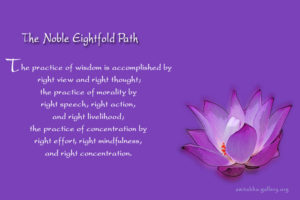Relieve Major Depression with Yoga
By John M. de Castro, Ph.D.
“for many patients dealing with depression, anxiety, or stress, yoga may be a very appealing way to better manage symptoms. Indeed, the scientific study of yoga demonstrates that mental and physical health are not just closely allied, but are essentially equivalent. The evidence is growing that yoga practice is a relatively low-risk, high-yield approach to improving overall health.” – Harvard Mental Health Letter
Clinically diagnosed depression is the most common mental illness, affecting over 6% of the population. Major depression can be quite debilitating. It is also generally episodic, coming and going. Some people only have a single episode but most have multiple reoccurrences of depression. Depression can be difficult to treat. It is usually treated with anti-depressive medication. But, of patients treated initially with drugs only about a third attained remission of the depression. After repeated and varied treatments including drugs, therapy, exercise etc. only about two thirds of patients attained remission. But, drugs often have troubling side effects and can lose effectiveness over time. In addition, many patients who achieve remission have relapses and recurrences of the depression. Even after remission some symptoms of depression may still be present (residual symptoms).
Being depressed and not responding to treatment or relapsing is a terribly difficult situation. The patients are suffering and nothing appears to work to relieve their intense depression. Suicide becomes a real possibility. So, it is imperative that other treatments be identified that can relieve the suffering. Mindfulness training is an alternative treatment for depression. It has been shown to be an effective treatment for depression and its recurrence and even in the cases where drugs fail. Another effective alternative treatment is exercise. But it is difficult to get depressed people, who lack energy, to engage in regular exercise. Yoga is a contemplative practice that is both a mindfulness practice and an exercise. It has been shown to be effective in the treatment of depression and even yogic breathing alone has been found to be effective. So, the combination of yoga practice with breathing exercises should be particularly effective.
In today’s Research News article “Adjunctive yoga vs. health education for persistent major depression: a randomized controlled trial.” (See summary below or view the full text of the study at: https://www.ncbi.nlm.nih.gov/pmc/articles/PMC5548599/ ), Uebelacker and colleagues recruited patients with Major Depressive Disorder (MDD) who were being treated with antidepressant medications and randomly assigned them to receive either 10 weeks of Hatha Yoga or a Health Education Workshop. Yoga classes included breathing exercises, meditation, and postures, and met for 80 minutes, twice a week for 10 weeks. Participants were encouraged to also practice at home. Health education classes included presentations on alcohol, nicotine, and caffeine; being a smart patient; brain diseases; cancer prevention; diabetes; nutrition; germs, colds, and the flu; physical activity; sleep; physical pain, prevalence and causes of depression; and protecting your heart and met for 60 minutes, twice a week for 10 weeks. Participants were encouraged to also study at home. Participants were measured before and after treatment and 3 and 6 months later for depression, physical health, and physical activity.
They found that at the end of training there was no significant difference between the groups in depression, but over the following 3 and 6 months, the yoga practice group significantly decreased in depression levels with moderate effect size while the health education group did not. In addition, over the 3 and 6 months follow-up period a greater percentage of participants in the yoga group no longer met the criterion for clinical depression. There were no significant changes in physical health and no adverse events recorded. So, yoga practice was found to be a safe and effective for major depression even in combination with antidepressant medication.
It is important to note that the yoga group continued to practice at home after the 10 week training period averaging 36 and 34 minutes of practice per week over the 3 and 6 months follow-up periods. It is not known but suspected that the improvements in depression over this period may have been due to the continued practice. It is also important to note that this study was of excellent quality with an equivalent control condition. This is rare in this kind of research and greatly strengthens the conclusions. Hence, it appears that yoga practice helps to relieve depression in patients with Major Depressive Disorder (MDD) even with continued antidepressant medication.
So, relieve major depression with yoga.
“yoga classes dramatically reduced levels of depression—so much so that afterward most of the research subjects wouldn’t have qualified as depressed enough to participate in the study in the first place.” – Jessica Berger Gross
CMCS – Center for Mindfulness and Contemplative Studies
This and other Contemplative Studies posts are also available on Google+ https://plus.google.com/106784388191201299496/posts and on Twitter @MindfulResearch
Study Summary
Uebelacker, L. A., Tremont, G., Gillette, L. T., Epstein-Lubow, G., Strong, D. R., Abrantes, A. M., … Miller, I. W. (2017). Adjunctive yoga vs. health education for persistent major depression: a randomized controlled trial. Psychological Medicine, 47(12), 2130–2142. http://doi.org/10.1017/S0033291717000575
Abstract
Background
The objective of this study was to determine whether hatha yoga is an efficacious adjunctive intervention for individuals with continued depressive symptoms despite antidepressant treatment.
Methods
We conducted a randomized controlled trial of weekly yoga classes (n = 63) vs. health education classes (Healthy Living Workshop, or HLW; n = 59) in individuals with elevated depression symptoms and antidepressant medication use. HLW served as an attention-control group. The intervention period was 10 weeks, with follow-up assessments 3 and 6 months afterwards. The primary outcome was depression symptom severity assessed by blind rater at 10 weeks. Secondary outcomes included depression symptoms over the entire intervention and follow-up periods, social and role functioning, general health perceptions, pain, and physical functioning.
Results
At 10 weeks, we did not find a statistically significant difference between groups in depression symptoms (b=−0.82, SE=0.88, p=0.36). However, over the entire intervention and follow-up period, when controlling for baseline, yoga participants showed lower levels of depression than HLW participants (b = −1.38, SE = 0.57, p = 0.02). Fifty-one percent of yoga participants demonstrated a response (≥ 50% reduction in depression symptoms) at 6 month-follow-up, compared to 31% of HLW participants (OR = 2.31; p = 0.04). Yoga participants showed significantly better social and role functioning and general health perceptions over time.
Conclusions
Although we did not see a difference in depression symptoms at the end of the intervention period, yoga participants showed fewer depression symptoms over the entire follow-up period. Benefits of yoga may accumulate over time.
https://www.ncbi.nlm.nih.gov/pmc/articles/PMC5548599/









